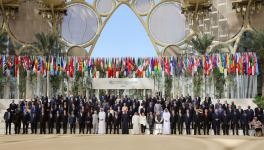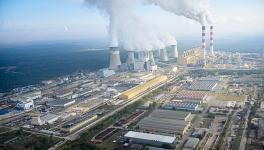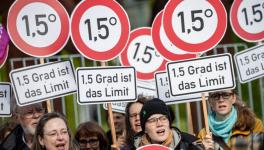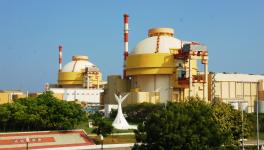Climate Crisis: WMO and UNEP Reports are Wake Up Calls to Curb Greenhouse Gas Emissions
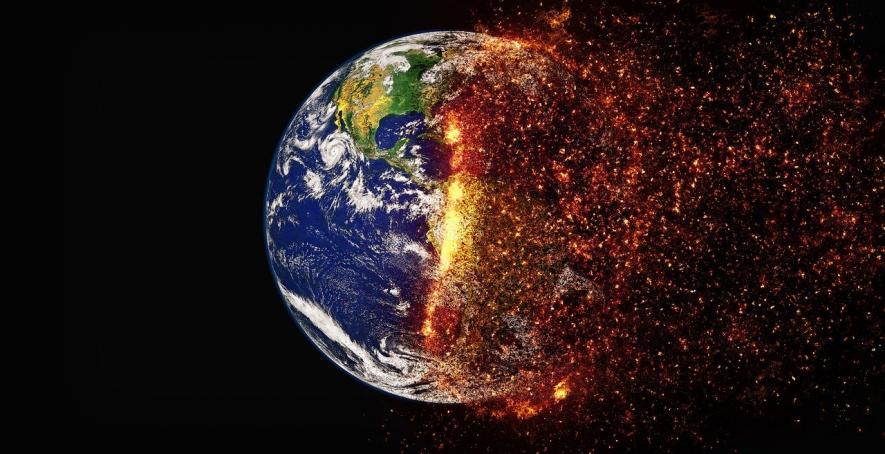
Representational image. | Image Courtesy: pixabay
Ahead of the Conference of the Parties 26(COP26), the United Nations( UN )climate conference to be held in Glasgow, Scotland, some reports on the emission status and the wide gaps in achieving climate mitigation goals are considered to be thundering wake-up calls. If the curb on emissions is not executed now, humanity will have immense sufferings in its fate; immediate implementation is the only way out at this crucial juncture, the reports warn.
Greenhouse Gas Bulletin:
One of the reports is the Greenhouse Gas Bulletin, produced by WMO (World Meteorological Organization). The Twitter handle of the UN organisation wrote —“ Greenhouse gas levels are at new records. Again Concentration of CO2 in 2020 was 149% of pre-industrial times. The economic slowdown from COVID-19 had no real impact. We are set for an increase much higher than the Paris Agreement target of 1.5°C-2°C.”
WMO’s message is loud and clear—we have no time to put drastic measures on emission to avoid climate disasters.
Petteri Taalas, head of WMO said in the same tune—“ Greenhouse Gas Bulletin contains a stark, scientific message for climate change negotiations at the upcoming UN climate conference, known as COP26, in Glasgow.”
“At the current rate of increase in greenhouse gas concentrations, we will see a temperature increase by the end of this century far above the Paris Agreement targets of 1.5 to 2 degrees Celsius above pre-industrial levels. We are way off track”—he further explained.
According to the WMO report, the concentration of carbon dioxide in the year 2020 recorded a stunning 149% above the pre-industrial level. This is accompanied by methane concentration at about 262% and nitrous oxide at 123%, both a greenhouse gas and an ozone depleting substance.
Although COVID-19 induced lockdowns led to some momentary decrease in the emissions, they did not have a discernible impact on the atmospheric greenhouse gas emission level. In fact, their concentrations in the atmosphere are accelerating. As the report said, with an unabated rise in emissions, global warming is also bound to rise.
More importantly, as carbon dioxide is a long-lived gas in the atmosphere, the present temperature level will continue even if emissions come down to net-zero rapidly, the report warned.
“The last time the Earth experienced a comparable concentration of CO2 was three to five million years ago, when the temperature was 2-3°C warmer, and sea level was 10-20 meters higher than now”, said the WMO chief. “But there weren’t 7.8 billion people then”, he reminded.
The report emphasises that “We need to transform our commitment into action that will have an impact of the gases that drive climate change. We need to revisit our industrial, energy and transport systems and whole way of life.”
“The needed changes are economically affordable and technically possible, there is no time to lose”—it reiterates.
The Emissions Gap Report:
The other important report produced by the UN Environment Programme (UNEP) also rings a warning bell. It clearly says that the national plans to curb emissions fall far short of what is needed at this moment. The emission gap report said that the country pledges would meet failure in keeping global temperature below 1.5 degrees Celsius this century.
The UNEP analysis also suggests that the world is heating up to about 2.7 degrees Celsius higher that would have devastating impacts.
However, the report suggests that temperatures can be controlled significantly if long-term net-zero goals are met. The emission gap report has reached its 12th year, and it analyses the NDC (Nationally determined contribution) in cutting carbon emissions that countries have submitted to the UN before the COP26 starts.
The report said that when the NDCs are put together, it will cut greenhouse gas emissions by 7.5% till 2030 in comparison to the pledges made five years back. However, the report says that this is way behind what is needed to keep the temperature within 1.5 degrees Celsius than the pre-industrial level, as laid down in the Paris Agreement.
The report suggests that to keep the 1.5 degree Celsius threshold, a cut by a massive 55% would be required by 2030.
“To stand a chance of limiting global warming to 1.5C, we have eight years to almost halve greenhouse gas emissions: eight years to make the plans, put in place the policies, implement them and ultimately deliver the cuts," Inger Andersen, executive director of UNEP, was quoted to have said.
The current pledges are so insufficient that the report finds it would lead to a 2.7 degree Celsius warming in this century. That would be a climate catastrophe, according to UN secretary-general Antonio Gutteres.
These reports bear much importance ahead of the COP26 meeting, where nations will come out with their respective plans in order to contribute to climate control. These assessments are hoped to offer pertinent insights to renewed pledges by the leaders of the nations.
Get the latest reports & analysis with people's perspective on Protests, movements & deep analytical videos, discussions of the current affairs in your Telegram app. Subscribe to NewsClick's Telegram channel & get Real-Time updates on stories, as they get published on our website.









